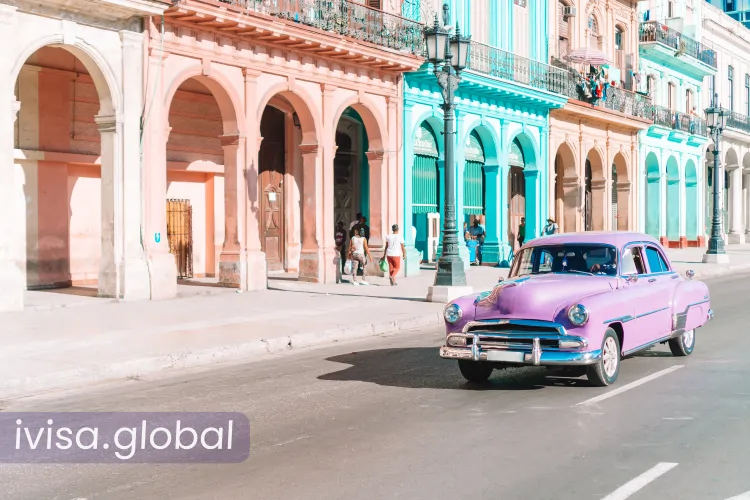Cuba, a fascinating island paradise nestled in the Caribbean Sea. This attractive destination attracts travelers from around the world with its intriguing blend of rich history, vibrant culture, and breathtaking natural beauty. From the bustling streets of Havana to the pristine, sun-kissed shores, Cuba’s undeniable appeal has cemented its status as a sought-after Caribbean hotspot.
The weather in Cuba is tropical, with a dry season from November to April and a rainy season from May to October. The dry season is cooler and less humid, whereas the rainy season is warmer and more humid, with rain showers or thunderstorms on occasion.
Why Choose Cuba?
Beginning a Cuban adventure promises an unforgettable experience, as you explore a world of architectural marvels, diverse cultural influences, and awe-inspiring landscapes. Visitors can explore the island’s fascinating historic sites, revel in the lively music and dance scene, or simply unwind on one of its many idyllic beaches. Moreover, Cuba is renowned for its warm and welcoming locals, who are eager to share their rich heritage and distinctive way of life with curious travelers.
Navigating Cuban Visas
To ensure a seamless journey to this charming island nation, it’s essential to secure the appropriate visa for your trip. The following overview outlines the most prevalent types of Cuban visas, providing valuable insight into the application process:
Tourist Visa
To begin a Cuban vacation for up to 30 days, most visitors require a tourist visa, often referred to as a “tourist card.” This separate card is typically presented upon arrival in Cuba and can be procured through your local Cuban embassy, consulate, or authorized travel agencies and airlines.
Here are some of the must-see attractions that make Cuba an unforgettable travel destination:
- Havana: Bursting with Charm The fascinating capital of Cuba, Havana, offers a unique blend of colonial architecture, lively music, and rich cultural heritage. Walking along the cobblestone streets of Old Havana (Habana Vieja), a UNESCO World Heritage Site, to admire the pastel-colored buildings and iconic plazas. Don’t miss the opportunity to take a ride in a classic vintage car and experience the city’s vibrant nightlife at local salsa clubs.
- Varadero: Boasting 20 kilometers of pristine, white-sand beaches and crystal-clear turquoise waters, Varadero is the ultimate seaside escape. Relax under the warm Caribbean sun, swim in the calm waters, or indulge in an array of water sports, including snorkeling and diving, to explore the vibrant marine life and coral reefs.
- Trinidad: Trinidad, another UNESCO World Heritage Site, is a beautifully preserved colonial town that transports visitors back to Cuba’s Spanish colonial era. Wander through the cobbled streets, visit the picturesque Plaza Mayor, and explore the town’s colorful architecture, museums, and art galleries. Trinidad is also known for its lively music scene, with numerous venues showcasing the best of Cuban music and dance.
- Viñales Valley: The stunning Viñales Valley, a UNESCO World Heritage Site, is a must-visit for nature enthusiasts and adventurers. The region is famous for its dramatic limestone cliffs (mogotes), lush tobacco plantations, and traditional rural lifestyle. Take a guided tour to explore the valley’s breathtaking landscapes, visit local tobacco farms, or try a horseback riding or hiking adventure to discover hidden caves and natural pools.
- Cienfuegos: Cienfuegos, a charming coastal city, is known for its elegant French-influenced architecture and beautiful bay. The city’s historic center, a UNESCO World Heritage Site, offers impressive landmarks, including the Cienfuegos Cathedral, Parque José Martí, and the captivating Palacio de Valle. While in Cienfuegos, don’t miss the opportunity to visit the nearby El Nicho waterfalls, a natural wonder nestled in the Escambray Mountains.
- Santiago de Cuba: Santiago de Cuba, the island’s second-largest city, is renowned for its rich history, Afro-Cuban culture, and vibrant music scene. Key attractions include the impressive Castillo del Morro, a UNESCO World Heritage Site, and the historic Plaza de la Revolución. Santiago de Cuba is also the gateway to the Sierra Maestra mountains, offering opportunities for trekking and nature exploration.
Business Visa
For those venturing to Cuba for professional endeavors, a business visa is necessary. This visa grants permission to engage in business activities, attend meetings, or join in conferences for a maximum of 30 days. Applicants must submit an invitation letter from a Cuban organization or company, along with the required documentation, to their local Cuban embassy or consulate.
Student Visa
Individuals aspiring to study in Cuba must obtain a student visa. Following acceptance into a Cuban educational institution and receipt of an admission letter, applicants can initiate the student visa process by submitting the necessary documentation to their country’s Cuban embassy or consulate.
Family Visa
Visiting family members in Cuba necessitates a family visa. Applicants must provide proof of their relationship to the Cuban resident they are visiting, as well as an invitation letter from the family member. This visa typically permits a 30-day stay, with the option to extend if necessary.
Journalist Visa
Professional journalists traveling to Cuba must secure a journalist visa. This essential document is required for reporters, photographers, and other media personnel working in Cuba. To obtain a journalist visa, applicants must submit a letter from their employer or media organization, in addition to the required documentation, to the Cuban embassy or consulate in their home country.






